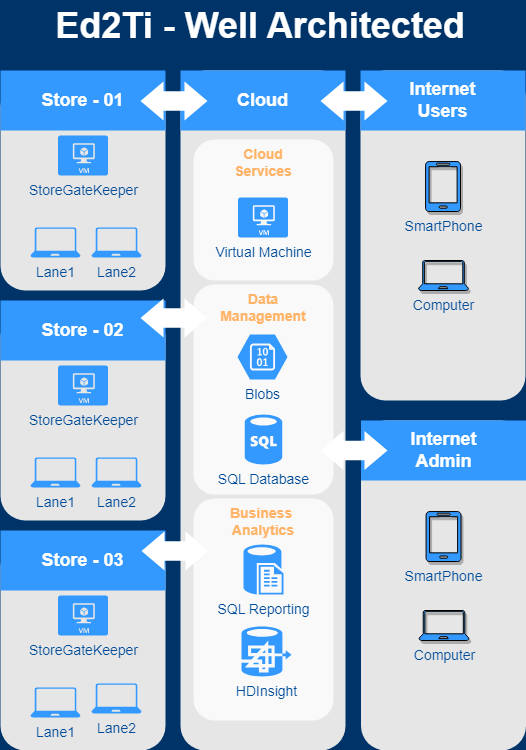A few years ago, I did a POS for a small company using Delphi, PHP, and MySql. It was a simple project to attend just one store and no max than 10 lanes (cashiers). In this old project, I developed the main software in Delphi (with a local paradox database) accessing a centralized database with a Mysql server. All the routines to manage the store I did in PHP, accessing the MySql Server.
The images used were stored in a Microsoft Samba driver and all new products (images) are updated on the lanes using this Samba file share. When we are talking about a small company, with good network access control, It works very well.
You may be curious if this software continues working until now. The answer is: No. After 2 years the company closed the doors and I did not continue this project. (I tried to find the code, but I don't have it anymore)
Today I'll refactor this old project into a new one, but now I'll use the Well-Architected. In this new project, we have:
- Point Of Sale - I'll do everything in Delphi 11 - Community Edition with sqlight3;
- StoreGateKeeper - I'll do It in GoLang with PostgreSQL;
- StoreManager - I'll do It in Laravel with PostgreSQL;
The StoreManager will be a centralized solution hosted in Cloud (Azure).
Details about this project and all codes you may get at my GiT: https://github.com/ed2ti/POS-Well-Architected
Here is the first diagram from this project.






